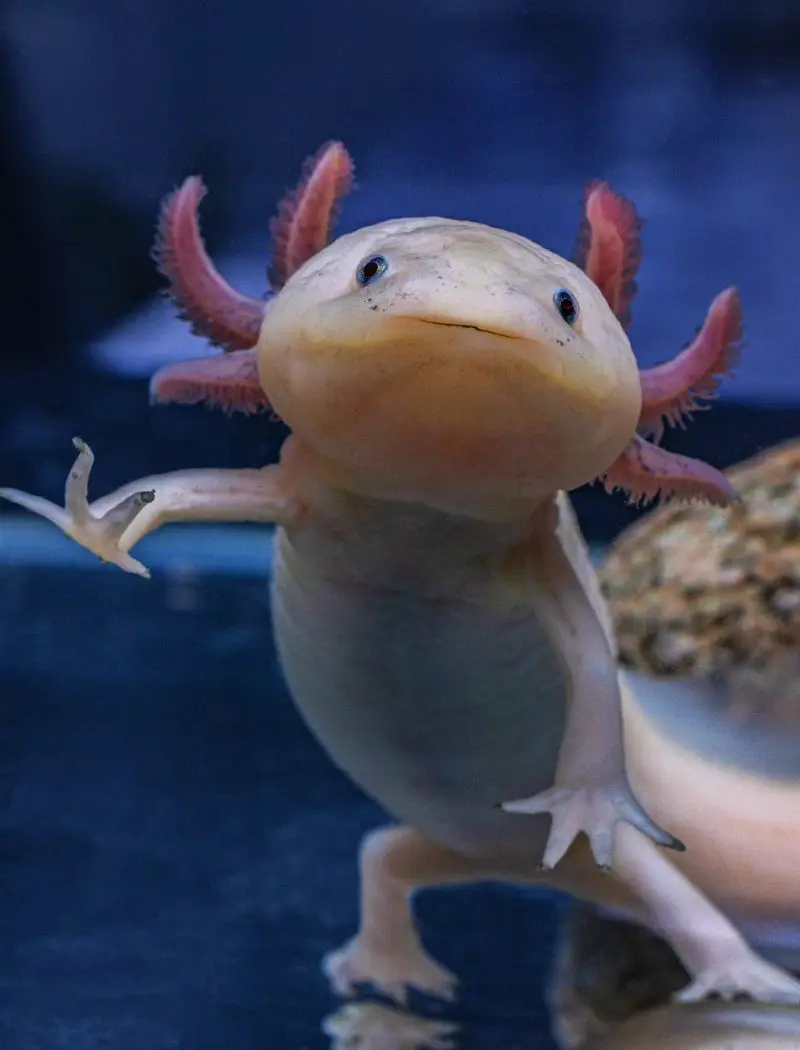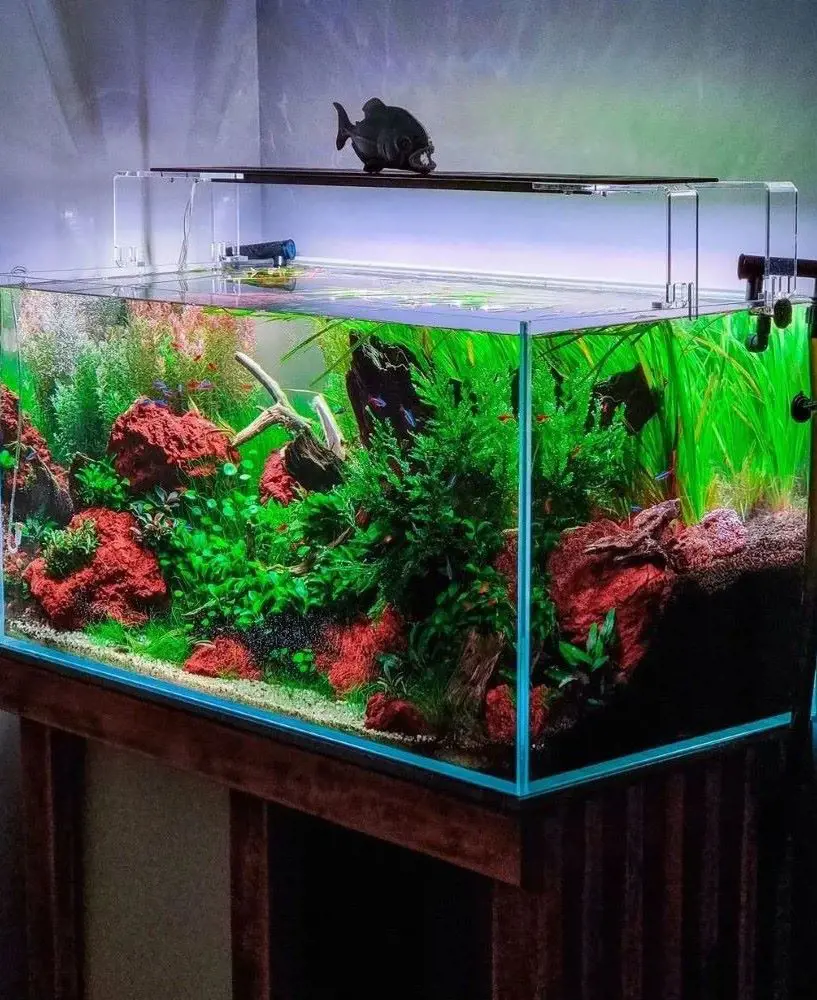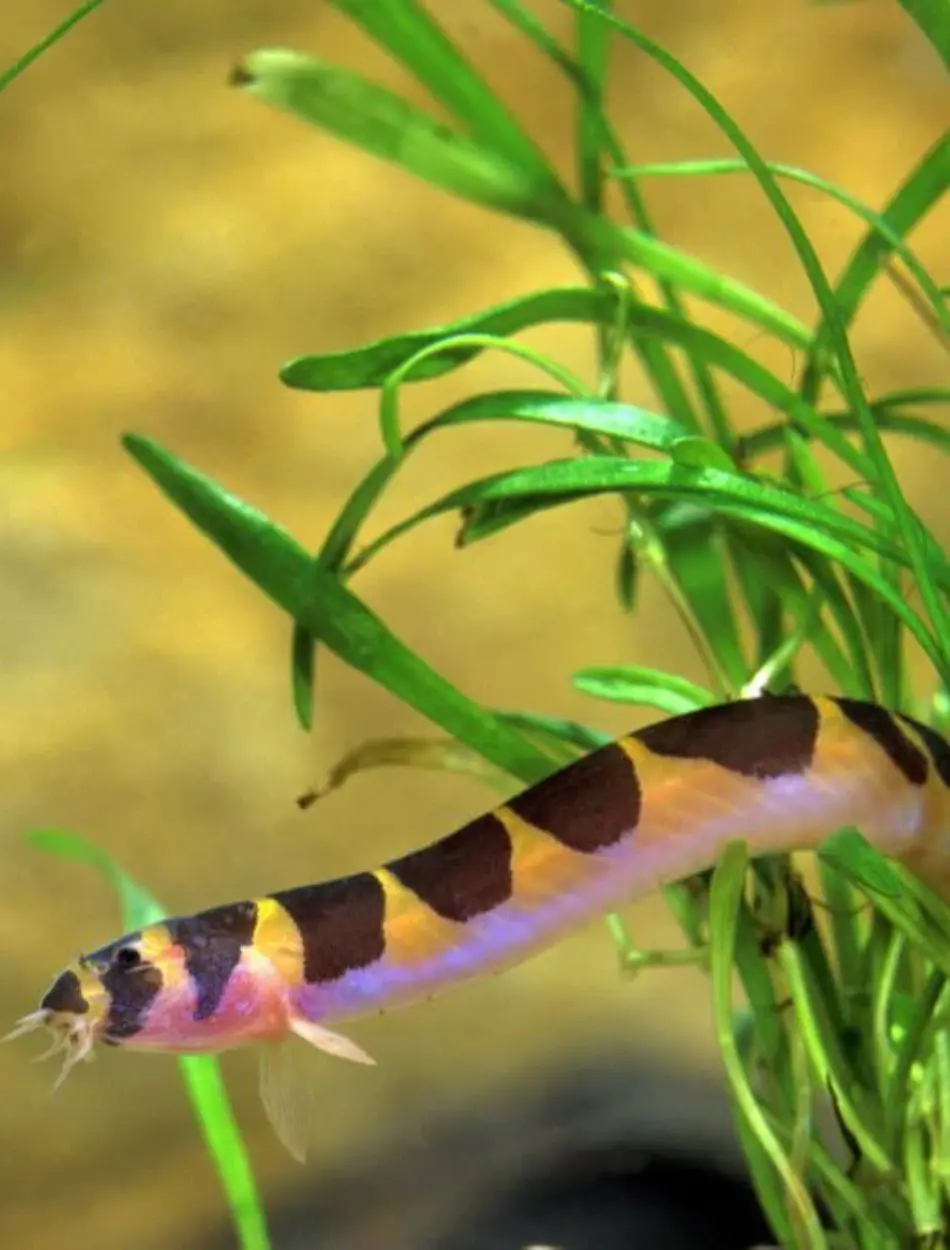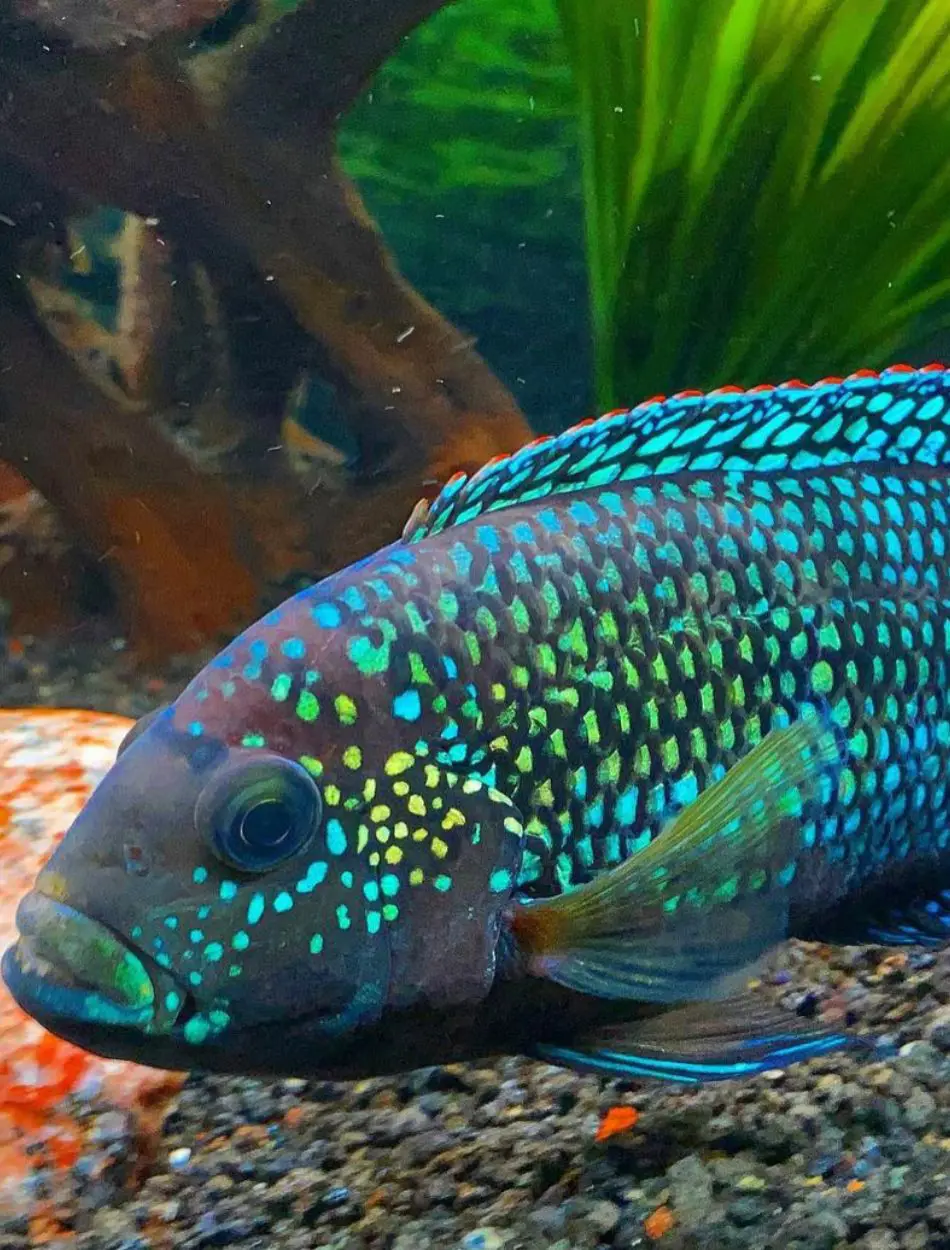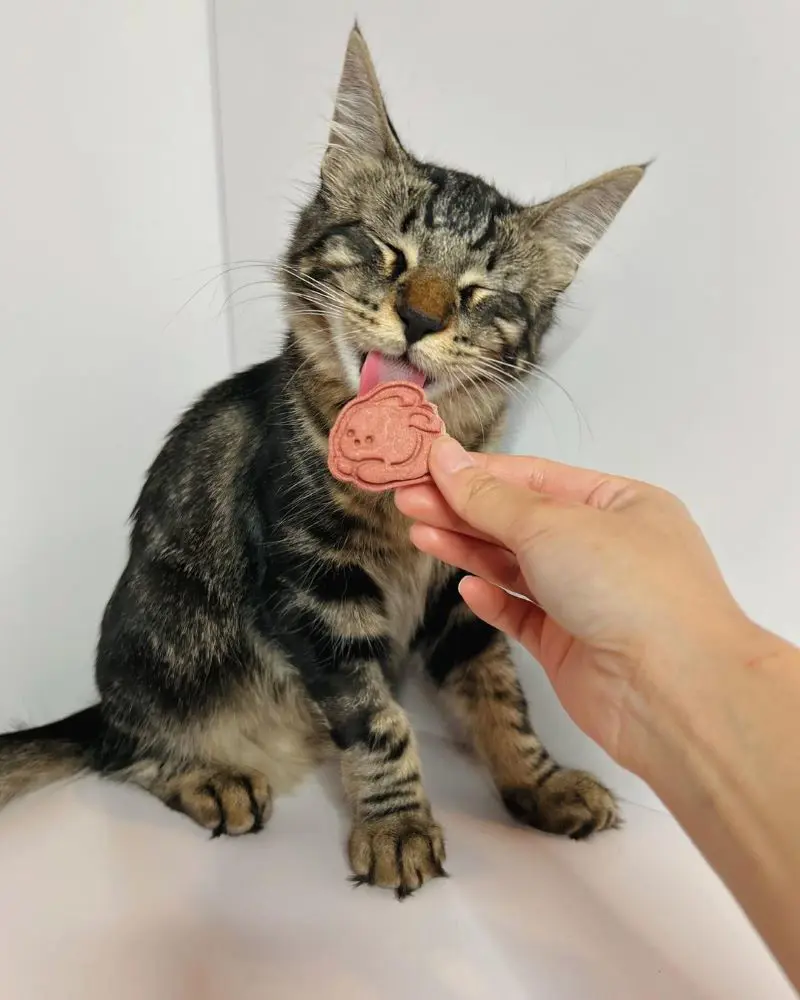Care Guide For Neon Tetra Fish And Its Tank Mates

The Neon Tetra have bright colors and a peaceful nature, making them an ideal fish for any aquarium these tiny but graceful fish from the crystal waters of the Amazon Basin in South America have made their way into aquariums the world over, capturing the minds of their with their shimmering blue and red stripes on the body.
While their main requirements are pretty simple, qualifying them as an ideal choice for any newcomer, the beauty of the fish and their social behavior will not leave any keeper disappointed.
Below is a care guide for keeping Neon Tetras in your environment, including setting up the perfect conditions, feeding habits, some breeding tips, and selecting suitable tankmates, we will also venture into the behavior and conditions necessary for such fish to be healthy and active in your community aquarium.
Ensuring a Balanced Diet
Nutrition foods will show them off as colorful and keep their health unimpaired, a proper diet with the exact imitation of the natural feeding regime must be supplied, again promising a vigorous and energetic appearance. Neon Tetras are omnivorous and they feed on small insects, larvae, and plant matter as parts of their diet in nature.
When they are in captivity, they need a wide range of diets that should be rich in flake food, micro-pellets, and live or frozen foods, you should always feed your betta fish with different varieties so that they can get all the nutritional facts growth and the improvement of their colors.
Overfeeding is associated with some health-related complications and poorly-attained water qualities so you should give them small portions that they can be able to eat in a few minutes.
Ideal Neon Tetra Tank Setup
Configuring ideal neon tetra tank conditions for your fish and it is very crucial to keep them healthy and in good shape, know their natural habitat, and set your aquarium accordingly, and only then will you see your them thrive.
Tank Size and Water Parameters
Even though neon tetras are small, they swim in groups; hence, the recommended minimum aquarium size is 10 gallons, the water should be soft and slightly acidic at a pH of 6.0-7.0 at temperatures between 70°F and 81°F, and you need to give them good running filtration systems and change their water regularly to provide them with the water quality required.
Lighting and Substrate
They require a medium light level, which would simulate the dappled sunlight they would normally get in the wild, harsh lights might be an irritant to them more than anything, so some balance has to be kept. A substrate color on the dark side like fine gravel or sand will help bring vividness to their bright colors and a much more realistic appearance.
Plants and Decorations
Some great plants to add to any Neon Tetra tank include Java Fern, Anubias, and Amazon Sword plants, they provide lovely coverage and resting places while also assisting in maintaining the water quality within your aquarium so add some driftwood or rocks so that they can hide behind and feel like they are in the shade and still waters they naturally inhabit.
Tank Mates
They are peaceful fish and get along with others who are not aggressive, peaceful fishes like Corydoras, Guppies, Rasboras make great companions, you may need to keep them away from bigger and more aggressive fish that might consider the former ones to be tasty snack.
Behavior of Neon Tetras

Some interesting behaviors of neon tetras are due to their social character, with the best interest caught when they behave in school. In itself, schooling is beautifully viewed, giving an impression of the comfort and safety of the animals within the aquarium.
Neon Tetras feel themselves much more comfortable alone than they would in a group, this schooling helps them find food and escape predators, so it is very natural and important for them. Under well-kept conditions for this species inappropriate water and compatible tankmates, Neon Tetras are supposed to be active and display their extreme colors under strong lighting.
Regarding fish behavior relative to signs of stress or illness they may present through faded colors, erratic swimming, or even withdrawing themselves. In a stable environment, good water conditions will make the neon tetras thrive, and these pretty colors with interesting behaviors will be kept on.
Breeding Neon Tetras
Breeding them in captivity is well worth the challenge to any serious aquarist, it is quite easy to breed the fish and raise the fry to adulthood under appropriate conditions.
Setting Up the Breeding Tank: A separate breeding tank will give the best chance of maximum survival for the fry, it will be a small tank, say 5-10 gallons, holding very soft and acidic water of pH 5.0-6.0, and at a temperature of 75°F to 78°F and the dark substrate with low lighting imitates their natural spawning conditions, which helps to encourage the proper breeding behavior.
Selecting the Breeding Pairs: The Neon Tetra breeding pair has to be selected and needs to be healthy and mature, males are in slender form with a brilliant blue line, while females are round in appearance and slightly dulled in color, on either sex, a diet rich in live foods conditions the breeding pair toward spawning.
Spawning process: Neon Tetras are egglayers, though they are quite different from other egglayers in that they scatter their eggs, after spawning, the adults must be removed from the aquarium as they have a disposition to eat the eggs and they hatch from their shells in 24 to 36 hours and the fry become free-swimming a few days later.
Caring for the Fry: Feeding fry is quite critical in the first couple of weeks of their lives, it can be fed on infusoria or commercial, liquid fry food until they grow big enough to eat micro-pellets or crushed flake food and the elite quality water should be maintained in the breeding tank for the survival and growth of the fries.
Common Health Issues

While generally hardy fish, some health issues may arise if they are kept in less-than-perfect tank conditions, their Disease is the most common affliction and it involves losing color, developing cysts, and swimming abnormally, the disease has no cure, so fish that have contracted it should be removed to prevent infecting any other fish in the aquarium.
Stress factors such as bad water quality, poor nutrition, and unsuitable tankmates may provoke diseases in them, you should control the water parameters regularly and a balanced diet, together with a peaceful environment inside the tank, are the ways to prevent such issues and ensure long-term health to your Neon Tetras.
Monitoring the fish for changes in behavior or appearance is also good, for obviously, early detection can make a huge difference in treatment and recovery from health problems, quarantining new fish will also help prevent the introduction of diseases into your established aquarium.
Neon Tetra Tankmates
If you want to create a harmoniously good-looking aquarium with your Neon Tetras, you must choose appropriate tankmates, since they are very small and peaceful by nature, choosing tankmates with the same attributes becomes very important, as they should not be a threat to them.
Small Peaceful Fish
Other ideal tank mates of a community of neon tetras include guppies, harlequin rasboras, and zebra danios, these are small in size, non-aggressive, and require almost the same water conditions and they are quite unperturbed and their swimming habits go well with each other so there would not be any conflict for other's space or necessities.
Bottom Dwellers
Some of the more obvious tank cleaners that would make good visual additions include the bottom-dwelling Corydoras Catfish or Otocinclus and these species are not aggressive and therefore do not tussle with the neon tetras for space; they make perfect tank mates, they make up an important part of the cleaning crew scavenging for food and other debris left in the aquarium after feeding to keep the aquarium environment cleaner and healthier for the fish inside.
Invertebrates
Amano Shrimp, Mystery Snails, and the long-known Cherry Shrimp remain the invertebrates that stay peaceful and can live with Neon Tetras, promoting the self-sustaining ecosystem of the tank. Besides making your tank look aesthetically pleasing, they form part of the natural cleaning process of the tank reducing the need for constant maintenance of the tank to ensure no upset occurs in the aquatic environment.
Species to Be Avoided
They are sensitive and should not be kept with big fish or those that are quiet or too aggressive, like cichlids, barbs, or betta fish, such species will treat Neon Tetras as either food or stress them out in a way that makes them lack vigor or even possibly become ill so it is important to ensure proper compatibility while introducing a new fish into your aquarium.
Ensuring Long-Term Health

Regular water changes, constant monitoring of its water parameters, and feeding a varied diet will certainly keep these fish healthy and bright, try to replicate the natural environment within the tank as much as possible and this is going to help in minimizing stress and increasing immunity against common diseases.
The way they swim and relate to each other and their environment makes them aware of the early signs of a possible health problem, and able to act before any small flare-up gets out of hand, besides the care for the physical health of your fish, you will need to provide groups for social well being since they are schooling fish.
If you can provide for their needs, you should be able to enjoy the beauty and serenity that they provide for your aquarium for years at a stretch, this will also ensure longevity by allowing research and staying up-to-date with their care, which will help you continue to improve the quality of life in these delicate and beautiful creatures.
Seasonal Changes and Their Influence
These changes bring change into your home, and in turn, into your aquarium, much as Neon Tetras are hardy fish, they still show some slight sensitivity to such the said seasonal changes, indirectly affecting them healthwise and behavior-wise and how these changes hit your Neon Tetras is something important and will help you across the year.
Temperature Changes: They appreciate stable water temperatures between 72 and 78 degrees Fahrenheit, you should choose the right water temperature by choosing Its range as a steady one and have a good quality aquarium heater in place, especially during the colder months, and monitor consistently for that matter using a thermometer.
Lighting and Photoperiod: They are used to having an average cycle of light of about 10-12 hours a day, in that case, an aquarium light set on a timer is recommendable, they also help in maintaining the rhythm of daily activities and generally their well-being and it may cause stress that is occasionally shown as an alteration in behavior or health loss.
Water Quality Adjustments: Even the slightest variations in pH or in mineral content will have some effect on the quality of the water your aquarium contains, transition of the seasons should be done with the parameters of the water tested. Doing so is likely to require adjustments to be made to maintain the parameters within the ranges considered ideal for the keeping of Neon Tetras.
Behavioral Observations: Being more attentive to these behaviors is important in that they are indicative of the fact that your fish will adjust well to the changes in their environment brought by the seasonal changes, this would guarantee a smooth passage, health, and happiness right through the year.
Managing Algae In Aquarium

One of the most common problems in an aquarium is algae but it does not mean that there are no measures to be taken to at least control and reduce the extent of the problem, It can appear green, brown, or even black on the glass, decorations, or plants of the tank.
While small amounts of algae are not harmful but rather beneficial, too much can quickly let the quality of the water and appearance become polluted, regular water changes and monitoring of the amount of nutrients, including nitrates and phosphates avoid the occurrence of any conditions that would support algal growth.
You could add some algae-eating friends, like the Otocinclus Catfish or the Amano Shrimp, they are non-aggressive and will do just fine with Neon Tetras in your tank. Cleaning the tank by scrubbing the glass and removing all the trash also helps in this regard and you would help to maintain your aquarium environment and keep it visually clean for your Neon Tetras.
Recent posts
Fish
Axolotl (Mexican Walking Fish): Species Profile
Axolotl is a walking fish that is known to captivate fish enthusiasts and scientists. They remain aquatic their whole life and stay in the larval stage. They are also known for their regrowing ability and solitary nature. This article discusses the h...
20 Coolest Freshwater Fish To Add Pop And Color To Your Aquarium
With so many options of freshwater fish available, selecting the right species can be a daunting task. Due to careful breeding, there are thousands of species ready at your disposal to turn your room into a fish lover's paradise. From the vibrant col...
20 Best Betta Fish Tank Mates
Selecting suitable Betta fish tank mates is a delicate work that calls for a considerate balance between companionship and compatibility. Although renowned for their colorful colors and flowing fins, Betta fish are equally notorious for their territo...
Why Is My Fish Tank Cloudy?
Cloudy fish tanks can be frustrating for any aquarium owner. Especially if one has put in the necessary effort to accomplish a beautiful underwater setting. Whether you are an inexperienced aquarium holder or one of the pros, cloudy water may be the ...
20 Long Freshwater Fish For Aquarium
Having a range of long, gorgeous fish in your freshwater aquarium can make it an immensely fulfilling experience. Choosing the right fish is the first step to an exciting freshwater aquarium, and long freshwater fish are among the best options. ...
17 Cichlid Tank Mates For Your Aquarium
Cichlids are one of the diverse and captivating freshwater fish that are known for their vibrant colors. They are found in tropical America, mainland Africa, Madagascar, and southern Asia. These freshwater fish have elongated streamlined bodies...
